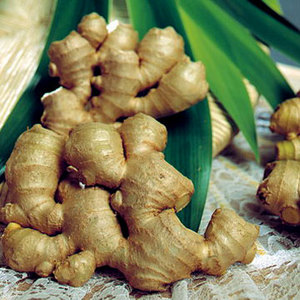Asthma is a medical condition that causes inflammation of the airways in the lungs, chest tightness, shortness of breath and coughing. Asthma affects more than 1 in 10 children and 1 in 12 adults in the United States. In addition to the steadily increasing rate of asthma sufferers, the number of asthma deaths per year has dramatically risen since 1980. Currently, 11 people die every day from asthma. Asthma costs our country over $56 billion per year in treatment, medications and lost wages, or a cost of over $3,300 per year for each person with asthma, according to the May 2011 CDC publication, Vital Signs: Asthma in the US: Growing Every Year.
In this 1997 study, “Residential exposure to plasticizers and its possible role in the pathogenesis of asthma.” , it was discovered that certain phthalate esters, such as di(2-ethylhexyl) phthalate (DEHP), cause inflammation of lung tissue by mimicking prostaglandins and thromboxanes in the lungs when inhaled. This activates the genes responsible for causing inflammation and hypersensitivity in the airways of the lungs which is a common characteristic of asthma, allergies and chronic obstructive pulmonary disease.
Numerous studies since the previous study was completed have shown that DEHP and other phthalates show a strong correlation to development of asthma, especially in children. For example, the 2004 study, “The Association between Asthma and Allergic Symptoms in Children and Phthalates in House Dust: A Nested Case-Control Study” demonstrates that the higher the concentration of phthalate esters in house dust, the higher incidence of childhood asthma, eczema and allergies. The 2008 study, “The role of exposure to phthalates from polyvinyl chloride products in the development of asthma and allergies: a systematic review and meta-analysis.”, summarizes that, “Epidemiologic studies show associations between phthalate exposure in the home and asthma and allergies.
Applied Environmental Toxicology provides a well-researched history of phthalates. They explain that wrld product of phthalate esters begin in the 1920’s, increased dramatically in the 1950’s and has continued to increase since that time. Currently, over 1.5 million metric tons of DEHP are produced throughout the world. The increase in production is consistent with the increase in asthma that is likely caused by exposure to DEHP.
In the study published in 2011, “Ginger suppresses phthalate ester-induced airway remodeling.”, by the Institute of Clinical Medicine, College of Medicine, Kaohsiung Medical University, human lung tissue was exposed to a variety of phthalate esters to induce asthma in the tissue. The asthmatic human lung tissue was then exposed to ginger. The result was a reversal of the inflammation and hypersensitivity in human lung tissue caused by exposure to phthalate esters. The study summarized that ” — ginger is capable of preventing phthalate ester-associated asthma.”
Although further testing is needed, there may soon be a cure for phthalate-induced allergic asthma. This can mean the end of suffering for millions of people around the world who have phthalate-induced allergic asthma.
Phthalates are used in a wide variety of consumer goods, such as PVC, as a fixative for synthetic fragrances for body care and cleaning product, in plastics, vinyl flooring and numerous other household products. Since phthalate esters leach from plastics and separate from liquid formumations, phthalate esters are also found in the air and in settled house dust. Phthalate esters are found in higher concentrations in indoor air than outdoor air due to offgassing of plastics, dispersing of fragrances from cleaning body care products and numerous household products including plastics, synthetic clothing, synthetic flooring and furniture.
You can reduce exposure to phthalates and reduce the risk of developing phthalate ester-induced asthma by avoiding as many of the above products as possible, switching to alternatives such as phthalate-free cleaning and body care products. Be sure to open windows at least once a week to exchange phthalate ester-laden air with outdoor air, which contains a far lower concentration of phthalate esters.
Resources:
Vital Signs: Asthma in the US: Growing Every Year
Residential exposure to plasticizers and its possible role in the pathogenesis of asthma.
The Association between Asthma and Allergic Symptoms in Children and Phthalates in House Dust: A Nested Case-Control Study
The role of exposure to phthalates from polyvinyl chloride products in the development of asthma and allergies: a systematic review and meta-analysis.
Applied Environmental Toxicology
Ginger suppresses phthalate ester-induced airway remodeling.

